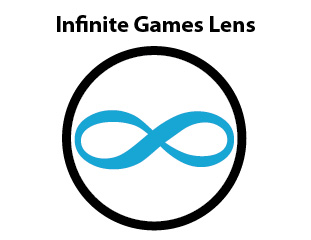 James Carse, in his wonderful book, Finite and Infinite Games, suggests:
James Carse, in his wonderful book, Finite and Infinite Games, suggests:
There are at least two kinds of games.
One could be called finite, the other infinite.
The finite game is played for the purpose of winning,
an infinite game for the purpose of continuing the play,
…and bringing as many persons as possible into the play.
Finite players play within boundaries;
infinite players play with boundaries.
Our traditional social systems have been designed as finite games. All the rest of nature has been designed as a wondrously infinite game.
The 4.54 billion year evolution of nature on this planet is our best example of an infinite game. Life on this planet has been evolving in the direction of ever-increasing intricacy, beauty, resilience and consciousness. More and more species have been brought into the game — 1.9 million and counting. All of these species, save one, seem committed to continuing the play. All species, save one, have always had “full employment.” All species, save one, seem to be fulfilling their destiny.
The Grameen Bank micro-credit initiative of Muhammad Yunus is a socio-economic example of an infinite game. Since the founding of this “bank for the poor” in 1976, micro-lending has spread to nearly every part of the globe and the field of microfinance has evolved to bring other financial services to peope spurned by commercial banks.
“What Are Infinite Games?” helps distinguish Finite from Infinite Games using business as an example.